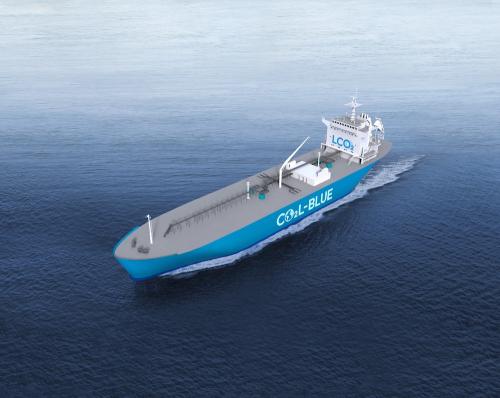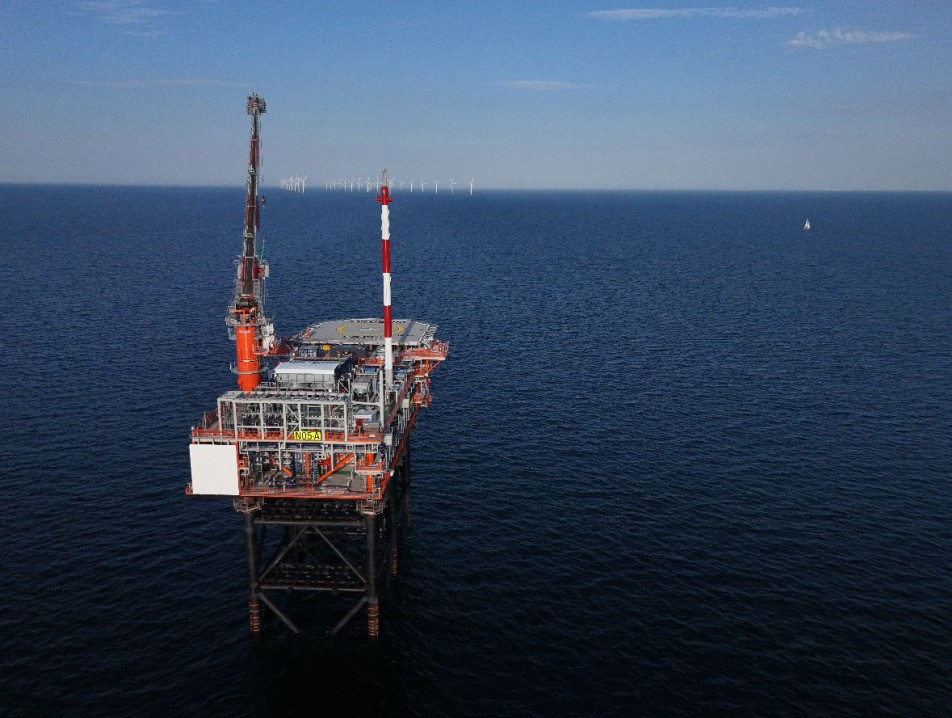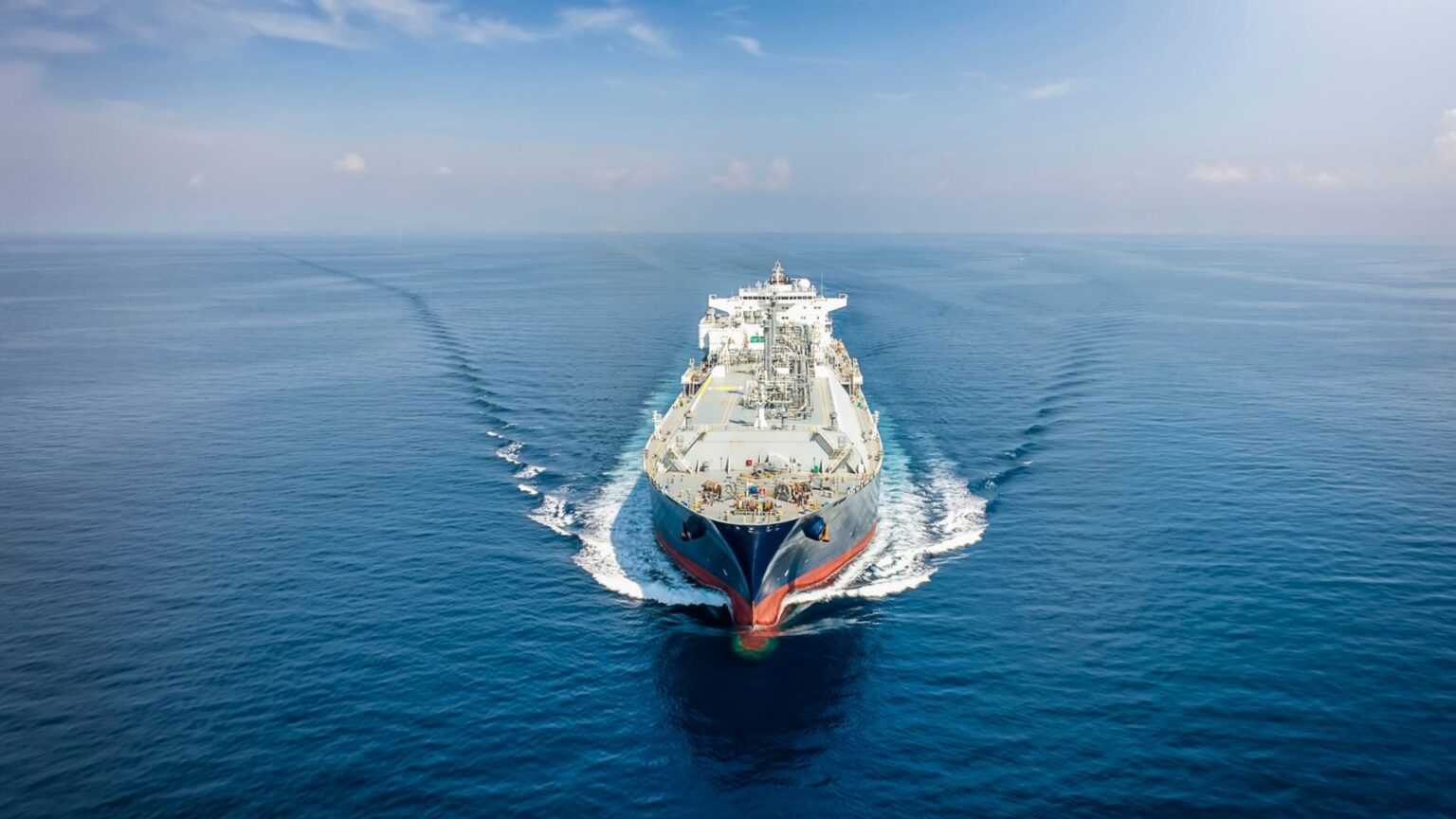三菱造船和日本邮船将联合开发大型液化二氧化碳运输船
作者: 发布时间:2021年11月10日 浏览量:596 字体大小: A+ A-

图片来自网络,版权属于原作者
来源:Offshore Energy 2021-11-09
翻译:国际海事信息网 赵扬捷 张运鸿
三菱重工(Mitsubishi Heavy Industries, MHI)集团旗下的日本造船厂三菱造船(Mitsubishi Shipbuilding)和其源流航运公司日本邮船株式会社(Nippon Yusen Kabushiki Kaisha, NYK Line)已决定共同开发大型液化二氧化碳运输船(LCO2)。
为了促进利用大型船舶运输二氧化碳技术的发展,该项目将把三菱造船的气体处理技术与日本邮船在中小型船舶以及全球需求上升的大型船舶操作方面的相关知识结合起来。
这两家公司将在开发液化二氧化碳运输船的基础上参与碳捕获、利用和封存(CCUS)的价值链中。
碳捕获、利用和封存作为实现碳中和世界的一种有效手段,正在吸引全世界的关注。液化二氧化碳运输船将在这一价值链中发挥重要作用,将液化的CO2运输到指定储存地点和专门设备处进行燃烧,预计未来对这些运输船的需求将会增加。
作为三菱重工集团能源转型战略举措的一部分,海洋系统集成商三菱造船正在积极追求液化二氧化碳运输船的商业化,吸取从液化气船建造中获得的技术和知识,努力支持海上去碳化。
这一联合项目有望为建立二氧化碳运输部门的碳生态系统做出重大贡献,将会成为碳捕获、利用和封存价值链的一个重要组成部分。
日本邮船期望建立使用大型液化二氧化碳运输船运输二氧化碳的技术,为实现碳中和世界做出重大贡献。通过与三菱重工集团的这个联合项目,日本邮船将整合其在船舶运营方面积累的知识,期望中小型船舶和大型液化二氧化碳运输船的早日实现。在这个项目的基础上,日本邮船公司还将参与到碳捕获、利用和封存的价值链中。
在未来,两家公司将通过开发这个项目而继续努力,努力研发碳捕获、利用和封存价值链所需的液化二氧化碳运输船技术,利用公司的互补优势和相关知识,为实现碳中和世界作出贡献。
今年8月,三菱造船还与法国能源巨头道达尔能源公司(Total Energies)联手,对开发液化二氧化碳运输船进行了可行性研究。
更重要的是,在2021年9月,造船厂获得了船级社必维国际检验集团(Bureau Veritas)的原则批准信(approval in principle, AiP),将一个货舱系统安装在液化二氧化碳运输船上。
(本文版权归国际海事信息网所有,图片版权归原作者,转载请注明出处。)
Mitsubishi Shipbuilding, NYK to jointly develop large LCO2 carrier
Japanese shipbuilder Mitsubishi Shipbuilding, part of Mitsubishi Heavy Industries (MHI) Group, and compatriot shipping company Nippon Yusen Kabushiki Kaisha (NYK Line) have agreed to jointly develop a large-scale liquefied CO2 (LCO2) carrier.
To facilitate the development of technologies for transporting CO2 using large vessels, this project will combine Mitsubishi Shipbuilding’s gas handling technologies with NYK Line’s knowledge in operations of not only small and medium-sized vessels but also large vessels that are expected to increase in demand globally.
The two companies will participate in the carbon dioxide capture, utilization, and storage (CCUS) value chain based on the development of LCO2 carriers.
CCUS is attracting attention worldwide as an effective means to achieve a carbon-neutral world. LCO2 carriers will play a vital role in that value chain by transporting liquified CO2 to storage sites and facilities for utilization, and demand for these vessels is expected to increase in the future.
Mitsubishi Shipbuilding is actively pursuing commercialization of LCO2 carriers as part of MHI Group’s strategic initiative for the energy transition, bringing together technologies and knowledge gained from construction of liquified gas carriers in an effort, as a marine systems integrator, to support decarbonization at sea.
This joint project is expected to make a significant contribution to the establishment of a CO2 ecosystem in the CO2 transport sector, which will be an essential component of the CCUS value chain.
NYK Line expects the establishment of technology to transport CO2 using large-scale LCO2 carriers to make a significant contribution to the realization of a carbon-neutral world. Through this joint project with MHI Group, NYK Line will be integrating its accumulated knowledge in ship operations to support the early realization of not only small and medium-sized vessels but also large-scale LCO2 carriers. Building on this project, NYK Line will participate in the CCUS value chain.
Going forward, the duo will continue their efforts through this joint development project to develop the technologies for LCO2 carriers necessary to establish a CCUS value chain, utilizing the complementary strengths and knowledge of the companies to contribute to the realization of a carbon-neutral world.
In August this year, Mitsubishi Shipbuilding also joined forces with French energy major Total Energies to carry out a feasibility study for the development of an LCO2 carrier.
What is more, in September 2021, the shipbuilder obtained approval in principle (AiP) from classification society Bureau Veritas for a cargo tank system to be mounted in an LCO2 carrier.
来源:simic
今日要闻
图片新闻
海外传真
热点报道






